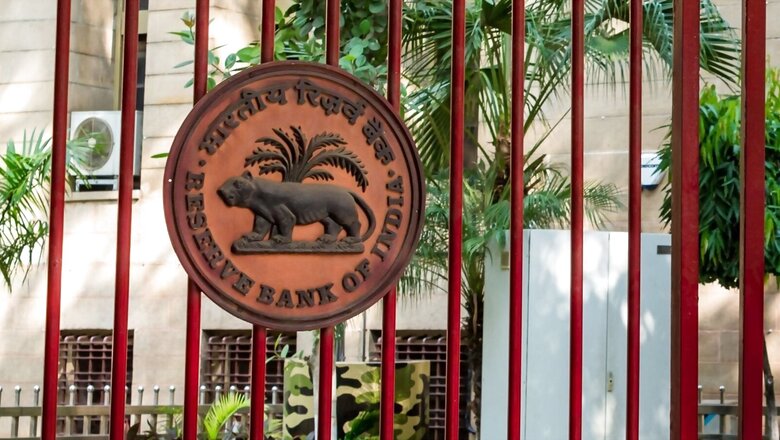
views
Rate hikes by the RBI going ahead are likely to be in baby steps and will be more focused on restraining the broadening of price pressures and/ or to pre-empt second-round effects. It is likely to be less aggressive, more data dependent and focused on anchoring inflation/ inflationary expectation, as opposed to the rate hikes which started in May 2022, to essentially align the policy rate to surging inflation, according to a report by India Ratings.
“Despite the 190-bp rate hike so far and tightening liquidity conditions, the RBI believes that the monetary policy is still accommodative because the nominal policy repo rate if adjusted for inflation trails the 2019 levels even now,” India Ratings said in the report.
It also said the retail inflation in India is expected to fall to 6.3 per cent in the third quarter of FY23 and 6.5 per cent in 4QFY23 from 7 per cent in 2QFY23. The RBI in its monetary policy statement in September 2022 projected the retail inflation to come in at 6.5 per cent in 3QFY23, 5.8 per cent in 4QFY23 and 5 per cent in 1QFY24.
India’s retail inflation accelerated to a five-month high of 7.41 per cent in September. It was the ninth month that the Consumer Price Index (CPI)-based inflation has remained above the RBI’s upper tolerance limit of 6 per cent, and has risen despite the central bank’s efforts to curb it. The retail inflation had stood at 7.04 per cent in May, 7.01 per cent in June, 6.71 per cent in July, 7 per cent in August and now 7.41 per cent in September.
Ind-Ra said the terminal policy rate will be 6.25-6.50 per cent in the current rate hike cycle, subject to the retail inflation falling to 5.0-5.5 per cent by Q1FY24. Although the Reserve Bank of India (RBI) has ruled out any such terminal policy rate, India Ratings believes a real policy rate of 1.0-1.5 per cent would provide comfort to the regulator as the real policy rate is in the negative territory.
“Retail inflation had remained elevated till November 2020, largely due to the supply-side disruptions caused by the COVID-19-related restrictions because demand-side pressures were absent during this period. Thereafter, it moderated and remained below the RBI’s upper tolerance band until December 2021 mainly due to the base effect, with the exception of May and June 2021. However, in January 2022, it again breached the upper tolerance band and since then has remained in excess of 6 per cent,” it added.
These pain points were visible in the September 2022 retail inflation as food inflation reached a 22-month high and cereal inflation jumped to a 108-month high. The 2022 monsoon season ended with a rainfall surplus of 6 per cent but the sowing in the case of paddy and pulses were down 5 per cent and 4 per cent, respectively.
Sunil Kumar Sinha, principal economist and senior director (public finance) at India Ratings, said, “Given the rise in wheat prices lately and below-par paddy sowing in the Gangetic plain, we believe cereals inflation will continue to exert pressure on retail inflation in addition to the sustained services sector and imported inflation. We also believe the emergence of headwinds from cereals to retail inflation is more worrisome as it tends to be stickier than the volatile food components such as fruits and vegetables.”
Read all the Latest Business News here














Comments
0 comment